If you told me another big budget zombie game was kicking off 2015, my eyes would have rolled back into the last decade. Dying Light is the evolution of the zombie apocalypse in video games. It is like going from George Romero’s Dawn of the Dead to Danny Boyle’s 28 Days later. The infected are faster, the cities are bigger, and the character capabilities far surpass any game in the genre. Techland have created an ambitious game, filling it with systems where none feel superfluous. It is all about vast exploration, fluid locomotion, and ultimately surviving the infestation.
 My co-op partner, Jason Love spent a ton of time hopping across the rooftops of Harran as well, so I've asked him to share some of his thoughts throughout.
My co-op partner, Jason Love spent a ton of time hopping across the rooftops of Harran as well, so I've asked him to share some of his thoughts throughout.
“Dying Light is a game that, at times, feels like it’s not sure what it wants you to be. Moral questions are abound and the frustration you feel at some of the characters is equally reflected in the thoughts of the protagonist. Are you the savior of a group of survivors just trying to make it out of the hellish landscape or are you the pawn of a government agency out to do whatever it takes to secure your objective? -Jason

Dying Light is a first person action survival game set in the near future in the infected city of Harran. You play as Kyle Crane, an undercover agent for a supposedly beneficial agency called "Global Relief Effort," dropped into the middle of this urban sprawl and tasked with tracking down another agent gone rogue. The story centers around the Tower, a spire in the middle of the city that is home to most of the survivors and, more importantly, the runners. The Tower acts as your home base and it is set up like a refugee camp in a warzone. Scrap heaps line the hallways and windows are boarded up for protection. Littered throughout the makeshift rooms are citizens who are trying to survive; some will offer words of advice, while others seek your aid. It is up to you to decide if you want to help them or not, as doing so will take to you the edges of the city which are filled with chaos and destruction. The story in Dying Light is typical, but the writing and execution actually make you feel for the characters and give a damn about what is happening in every scene.
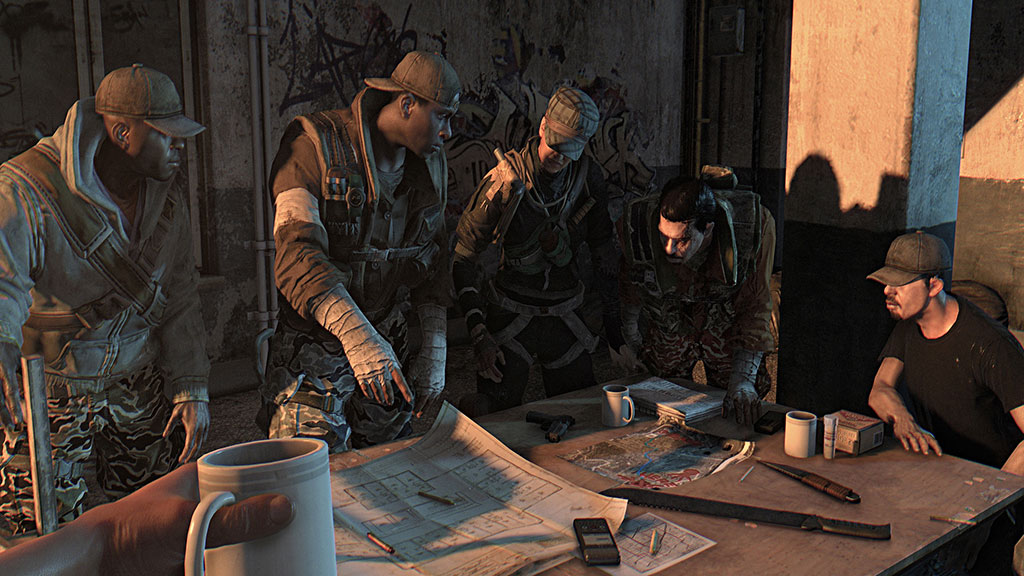
It is imperative to describe in detail the city of Harran, as Techland has crafted one hell of an open world space to explore. Skyscrapers line the horizon and shanty towns are scattered throughout the districts. Harran is cut off from the outside world, surviving only on airdrops and what little can be scavenged within the city. These caches become hotspots of contention among desperate survivors and violent marauders. Dynamic events appear naturally throughout the city and add to the believability of this diverse environment. All of this culminates in your fight for survival against the many threats - both living and non - who inhabit Harran. Although not every house is searchable, you can break and enter into most shacks to grab what goods you can on runs outside of the Tower. The city may be filled with undead, but it still feels like a living and breathing city I couldn’t stop exploring.
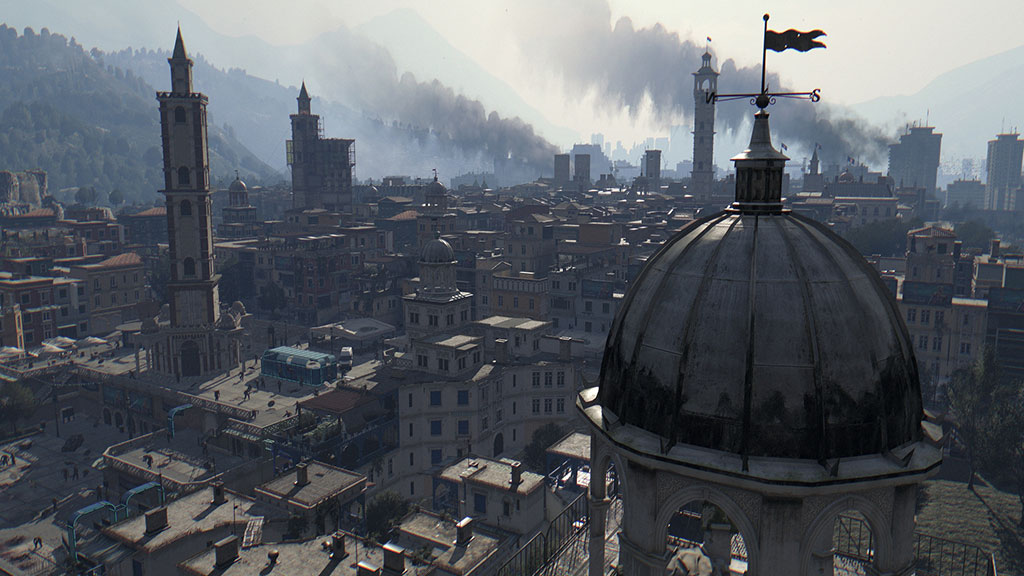
Nighttime is when the game’s imposition of “just survive” feels appropriate and well-executed, to a degree. -JL
Grabbing missions from various occupants in the Tower will have you finding lost memorabilia here, turning on a power station, or sometimes having to take out an entire group of foes. Like a good open world game, missions can be tackled in a variety of ways using weapons, surroundings, and traps to accomplish your task. Day will give you ample light to search for supplies, see where you can climb, and what hordes of enemies to avoid. Taking on these same endeavors at night will lead you down a dark, dangerous path filled with new horrors called Virals; a kind of “super” zombie ready to mess up any plans you had.
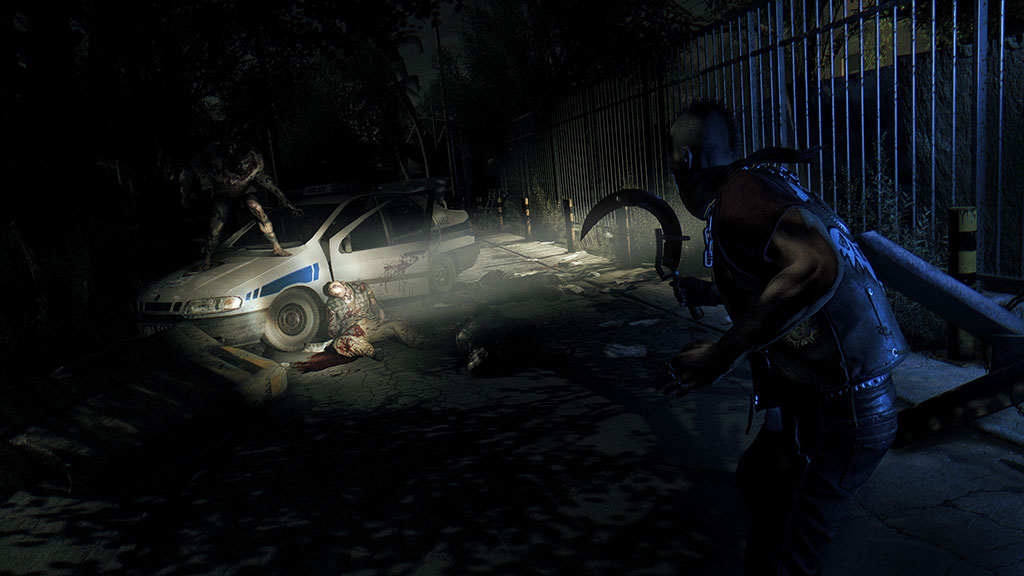
The real threat comes in the form of the “Virals,” which are extremely strong zombies that can also run, jump, and climb, which means your usual means of escape are no longer valid. If you should attract the attention of these foes, then it’s an all-out dash to the nearest safe zone. -JL
The balance between combat and parkour a selling feature for Dying Light. When one aspect becomes cumbersome, you rely on the other. My favorite part of the game is easily the parkour. With the press of a button and some nifty analog stick work you can carve out an impressive route across Harran with ease. It feels natural, it flows well, and is an integral part of the gameplay; namely survival. You’re going to be doing more running than fighting in Dying Light, and I’m okay with this fact. There are too many infected to try and take out on your own so running is your only option, especially at night when the aforementioned Virals come out to play. There is a freedom of movement which makes Mirror’s Edge look like child’s play. The melee combat on the other hand is passable and feels pretty clunky at times The rapid degradation of early game weapons does not help. Once a couple higher tier weapons have been acquired, the bashing and chopping becomes a little more fun, but since the locomotion is so tight, I always opted to run instead of fight. I’d rather use a zombie’s face as a launch pad to get to a rooftop than trying to use a board to mash his skull in.
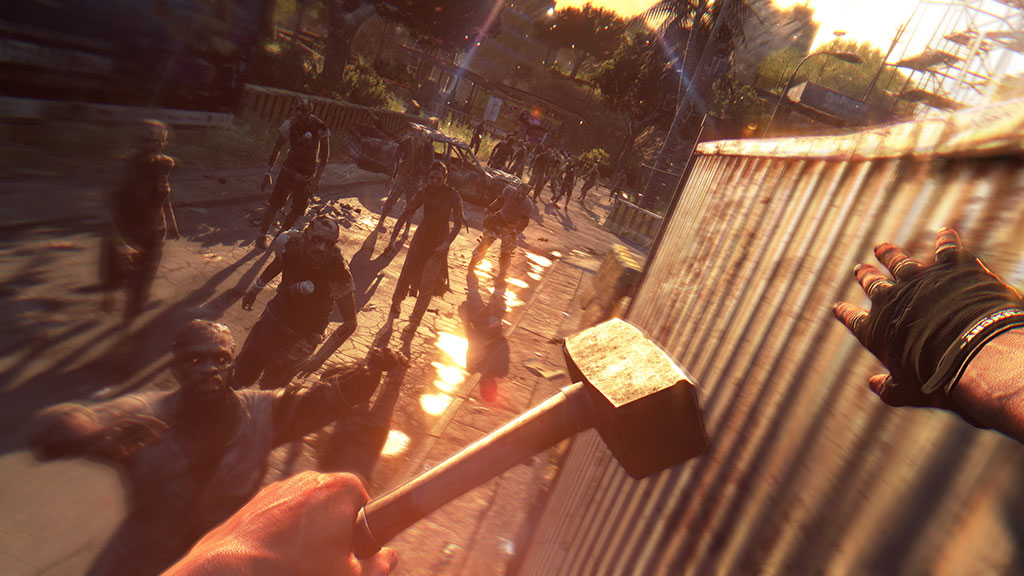
What is neat about Dying Light is how your character advances along the three skill trees. Every open world game has to have some sort of light RPG mechanics sprinkled in the mix, so in this case we are dealing with Survival, Combat, and Agility. You earn experience for these trees based on your actions in the game; so the more zombie head bashing you engage in, the more you’ll level up the Combat tree. Running and jumping earns you more Agility, and completing missions and random encounters levels Survival. While some skill unlocks don’t make sense, e.g., you magically knows how to perform a drop kick now but didn’t before, this system works fairly well and encourages balanced play. It’s not like you are going to spec out a ‘toon here so don’t get all weird with the min/max mindset.
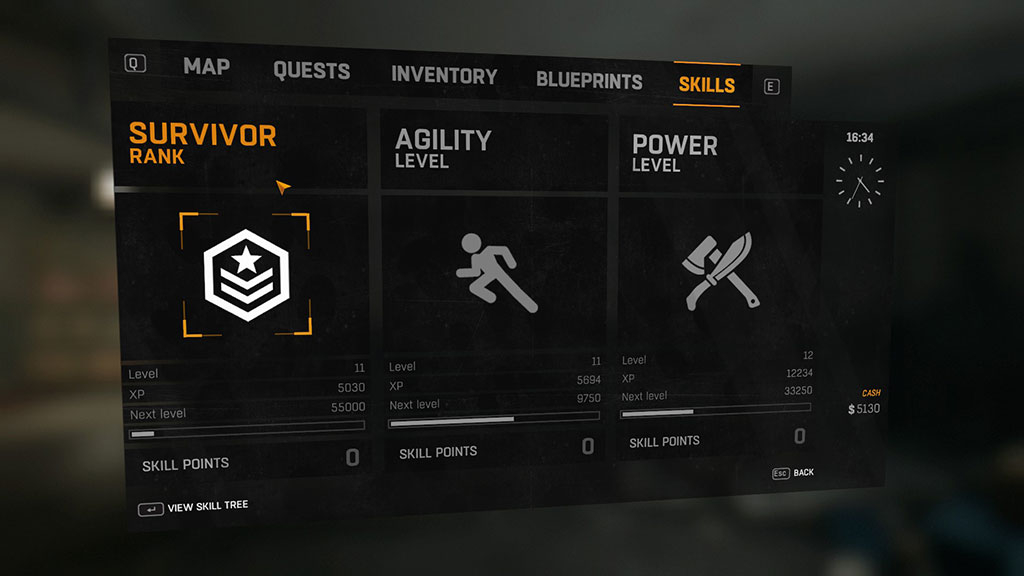
From a player perspective, as you level up the various skill trees, you’d naturally expect that you’d become more powerful and would die less frequently. There are skills that give you more life, let you do finishers to downed foes, and increase the damage you do with certain weapons. So, one would not be faulted for believing that spending the time to level up the different skill trees and finding better weapons would make things easier. Lots of games with similar mechanics work this way. You want to be a zombie-killing badass that’s doing parkour all over the place. Dying Light does not. -JL
Most of your best items will come from crafting. This requires you to search the city using your spider sense ping, which will pick up on anything in your immediate area that you can loot. Almost all items you find can be combined into something more useful; again, release the realism and relish in the fact that you have a pipe wrench with nails surrounding it and flames spouting off the top. Toss some flammable liquid into a crowd and boom, you have an infected lightshow party. Of course more useful items like medkits, thrown projectiles, and boosters, i.e., potions that temporarily increase your stamina or let you see at night, can all be crafted once you find the blueprints and the required materials. Unfortunately, there is no quick way to make these items and weapons. Crafting is done entirely through a sub-menu, which kind of takes away from the momentum of the game, but it does pay off to take some time in a safe house to stock up for the next run.
